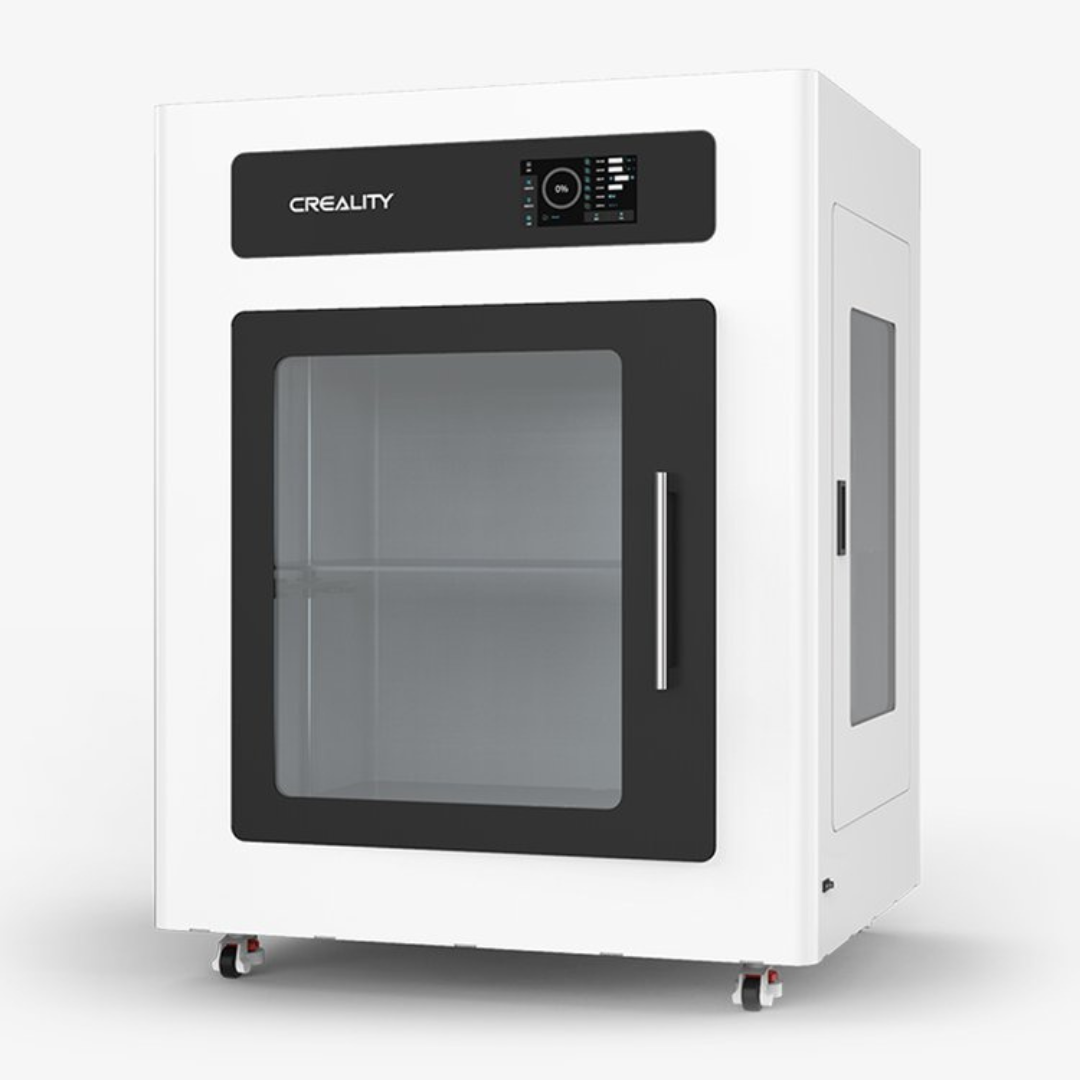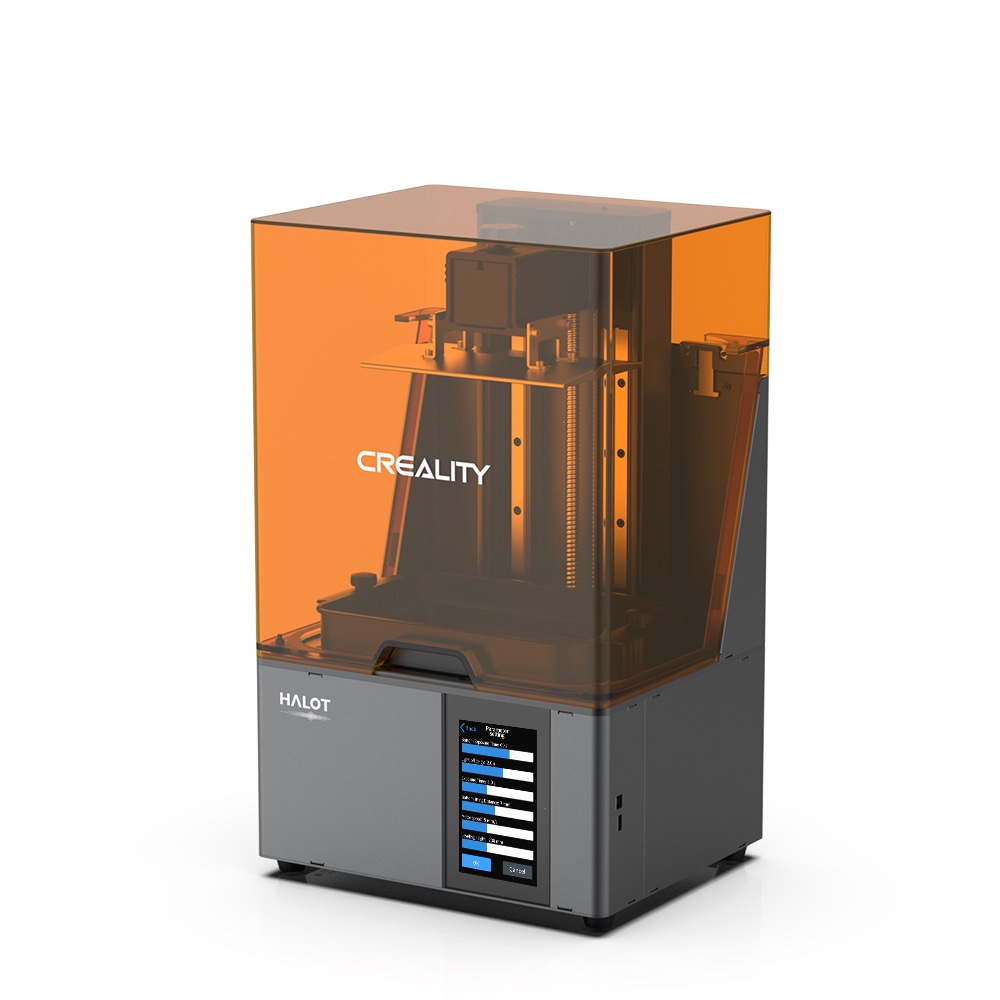Compare CR 5060 PRO vs Halot Sky
Comparison between the best 3D printers
Choose the best 3D printer at the best price. The cheapest 3D printers are here.
Buy a 3D printer here with 3D Fila.
 |
 |
|
| Model | CR 5060 PRO |
Halot Sky |
| Printing Material | Filament | Resin |
| Buy Filament for Creality 3D CR 5060 PRO | Buy Resin forCreality 3D Halot Sky | |
| Estimated price | $4500,00 | $879,00 |
| Manufacturer | Creality 3D | Creality 3D |
| Release Year | 2021 | 2021 |
| Print Volume [mm] | 500x500x600 | 192x120x200 |
| Printer Size [mm] | 905x800x1150 | 340x29x550 |
| Weight [kg] | 140 | 16,5 |
| Power Loss Recovery | YES | NO |
| Maximum Resolution [mm] | 0,1 | 4k |
| Processor | ATMEGA 2560 | |
| Display | Display touchscreen 7'' | |
| Power Supply | 220V / 900 W | |
| Connectivity | SD / USB | Wi-Fi |
| Operating systems | ||
| Date of registration in the system | 2022-11-04 | 2022-10-11 |
| Release date | 2021 | 2021 |
| Extra features | Creality CR-5060 Pro 3D Printer: Designed to create large three-dimensional models, it offers a large workspace of 500 x 500 x 600 mm. It stands out for its fully enclosed work chamber, ensuring a constant temperature during printing, essential for the quality and precision of the models. Its robust structure, with dimensions of 905 x 800 x 1150 mm, is supported by a stable frame, providing durability and stability. The CR-5060 Pro offers easy access to the heated bed, either through the front door or the flap at the top of the casing, and includes a filament spool mounted in a lockable recess, ensuring material protection. Additionally, this printer is equipped with casters, facilitating its transport and handling in different environments. Ideal for professionals and enthusiasts looking for high quality in large-scale 3D prints. | The Creality HALOT SKY stands out with its 8.9-inch 4K monochrome display, ensuring detailed prints. Its robust construction includes dual linear rails and a ball screw on the Z-axis, offering precise movements. Equipped with an ARM Cortex-A53 Quad-Core processor and Wi-Fi, it provides a responsive and connected user experience. The flip cover saves space and the 120W UV source ensures uniform curing. In addition, the HALOT SKY supports OTA firmware updates and integration with Creality Cloud, increasing efficiency and convenience in use. |
| Support for multiple colors and materials (AMS and CFS) | NO | NO |
Notes * |
||
| Cost-benefit | 4 / 10 | 7 / 10 |
| Hardware | 3 / 10 | 1.2 / 10 |
| Tela | . | . |
| Print volume | 5 / 10 | 3 / 10 |
| Performance | 2 / 10 | 9 / 10 |
Conclusion |
| In comparing the Creality 3D CR 5060 PRO and the Creality 3D Halot Sky, it's clear that both printers cater to different user needs and preferences, shaped significantly by their respective prices and functionalities. The CR 5060 PRO is designed for professionals and serious enthusiasts focused on large-scale projects, given its impressive print volume and robust construction. Its features, such as power loss recovery and a stable frame, make it suitable for demanding environments where high-quality, large models are required. However, the high price indicates that this printer is an investment that may be more appropriate for those who need its specific capabilities. On the other hand, the Halot Sky, while much more affordable, offers a compelling balance of performance and convenience with superior print resolution, advanced connectivity options, and a compact size. Its features, such as the 4K monochrome display and OTA firmware updates, appeal to users looking for efficient and high-quality prints without the need for a large volume, making it a great choice for hobbyists or those new to 3D printing. In conclusion, the best choice depends on the user's specific requirements. For large-scale, high-end printing needs, the CR 5060 PRO justifies its higher cost. Conversely, for those prioritizing affordability and excellent performance on a smaller scale, the Halot Sky stands out as a highly attractive option. Ultimately, potential buyers should carefully evaluate their printing needs, space constraints, and budget to make an informed decision that aligns with their goals in 3D printing. |

